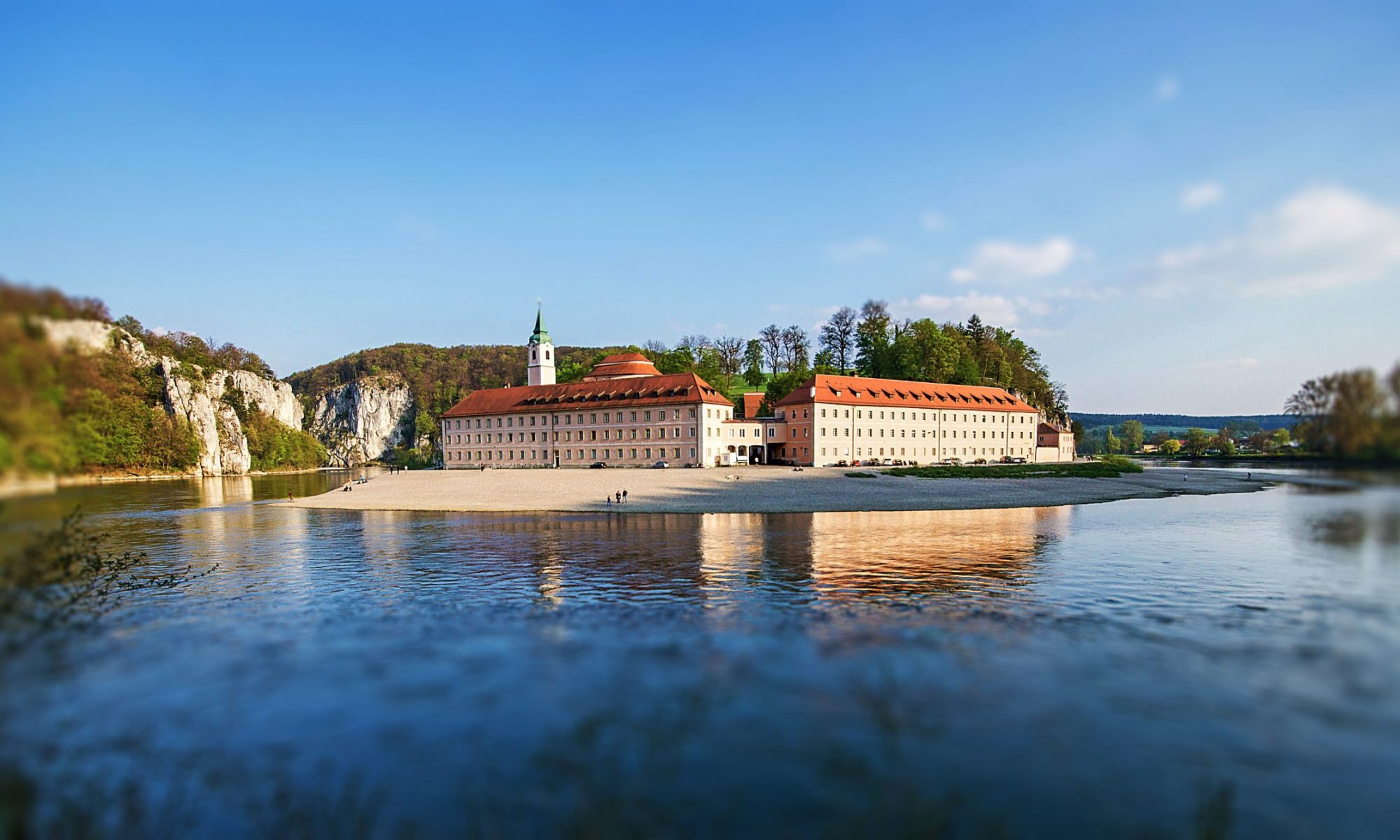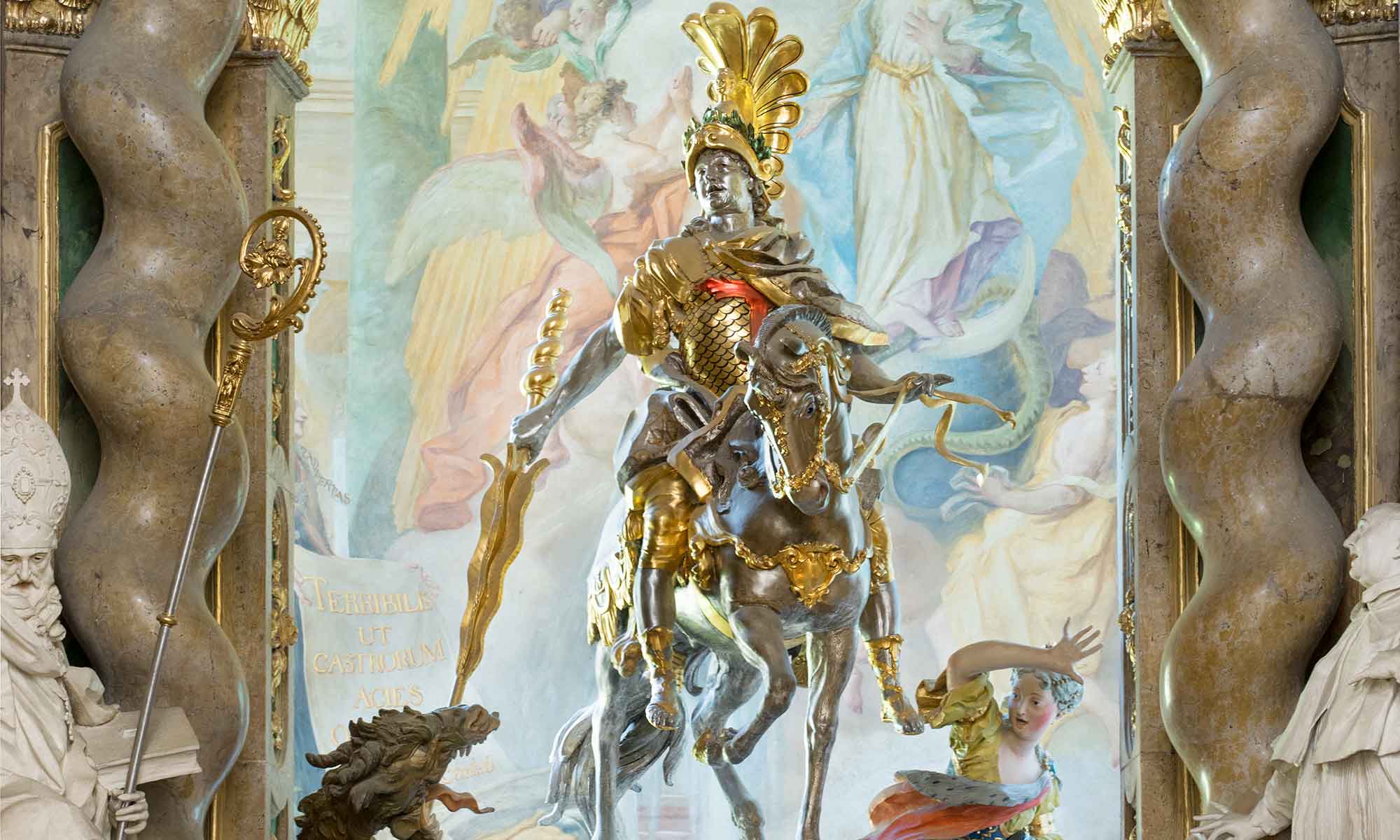To the visitor entering the dim church from the vestibule, the “Theatrum sacrum” of the high altar beckons in the distance, flooded by the light from the high, sun-like window of the apse. This work was begun in 1721 by Egid Quirin Asam and painted in 1724 by his sister Maria Salome (married Bornschlögl), but the altar was not finished until 1734. The altar reredos opens in a lofty central arch flanked by paired Solomonic (corkscrew) marble columns. Through this triumphal archway rides the church’s patron, St. George. The red Templar cross on his breast identifies him as a Roman-Christian hero (and explains its presence in the Weltenburg arms), and his armour reflects the dominant backlighting. Raised on a monumental plinth, he flourishes his flaming lance at a dragon which rears up at him in anger, while to his left an equally vivid Libyan princess hastily flees her oppressor. In its pyramidal composition, this scene from the saint’s legend is highly dramatic in itself, but it is made even more so by the theatrical lighting effects. Plunging from the radiance of heaven into the dim interior of the church, St. George is staged as the archetypal Christian warrior in the battle of light with darkness. This motif is echoed in the figure of Mary Immaculate crushing the serpent in the apse wall fresco by Cosmas and Franz Asam which forms a backdrop for the sculptural group. From the clouds high above this scene, God the Father extends a protective hand over his combatants.
From this dynamic scene, two further life-size plasterwork statues form a transition to the perspective of the audience: on the left stands St. Martin, the abbey church’s second patron, whose legendary goose hisses angrily at the dragon, while a naked putto wrapped in the folds of the bishop’s cloak does duty for the beggar of Amiens; on the right we find the abbot St. Maurus, the namesake of the Abbot Maurus Bächl who initiated the Baroque rebuilding of Weltenburg. For this reason the statue of the saint has the facial features of the builder. The paintwork imitating marble connects the statues with another group at the apex of the reredos, where, framed by the Archangels Gabriel and Michael, the Virgin Mary is assumed bodily into heaven, awaited by her Son (who is depicted in the ceiling fresco above). The thematic coherence of this scene with the apse wall fresco is evidence enough that the Asam brothers remodelled the high altar group even before it was completed.
A further level of meaning is provided by the magnificent full coat of arms of Prince-Elector Max Emanuel (who visited Weltenburg in 1721) at the top of the triumphal arch; he sought to reinstate the Wittelsbach Order of the Knights of St. George, a goal ultimately achieved by his son, Karl Albrecht, in 1729. The good relations between Weltenburg and the Bavarian ruling house are again thematized in the sanctuary ceiling fresco, which portrays Duke Tassilo III as the abbey’s founder.


